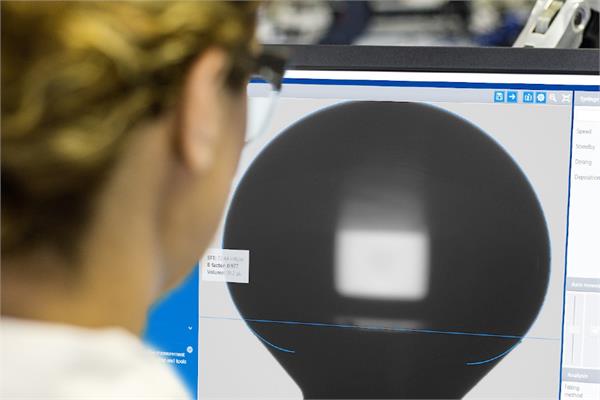
KRÜSS expanded its portfolio of optical interface analysis with a special method for measuring surface tension at high temperatures.
KRÜSS has recently announced that it has expanded its portfolio of optical interface analysis with the Constrained Sessile Drop
(Constrained SD) method, which allows the measurement of surface tension by using a single sessile drop. This addition will allow to perform rapid purity checks of contact angle test liquids and analyses of molten materials at high temperatures.
The Constrained SD technique observes how the opposing forces of surface tension (SFT) and gravity affect the shape of a droplet: if the density and dimensions of a dosed sessile drop are known, then the SFT can be calculated by image analysis of its contour.
Test liquids used for contact angle measurements are strongly influenced by even smallest amounts of surface-active impurities such as those left behind by rinsing agents, that could cause false results. Checking test liquid SFT using the Constrained SD method provides then an effective remedy: the measurements are fast, require no change to the measurement setup and can be seamlessly integrated into daily quality routines.
As a single sample can be melted directly on the sample pedestal, neither vessels nor high-temperature dosing units are required, so operators do not need to carry out time-consuming preparations and cleaning operations. In addition, the new Constrained SD technique added to KRÜSS’ portfolio of optical interface analysis works well under thermally isolated conditions, with the maximum temperature that can be extended up to 2000° C using special sample platforms made of zirconium oxide in combination with a high-temperature measuring system.